Pula, Croatia 2015
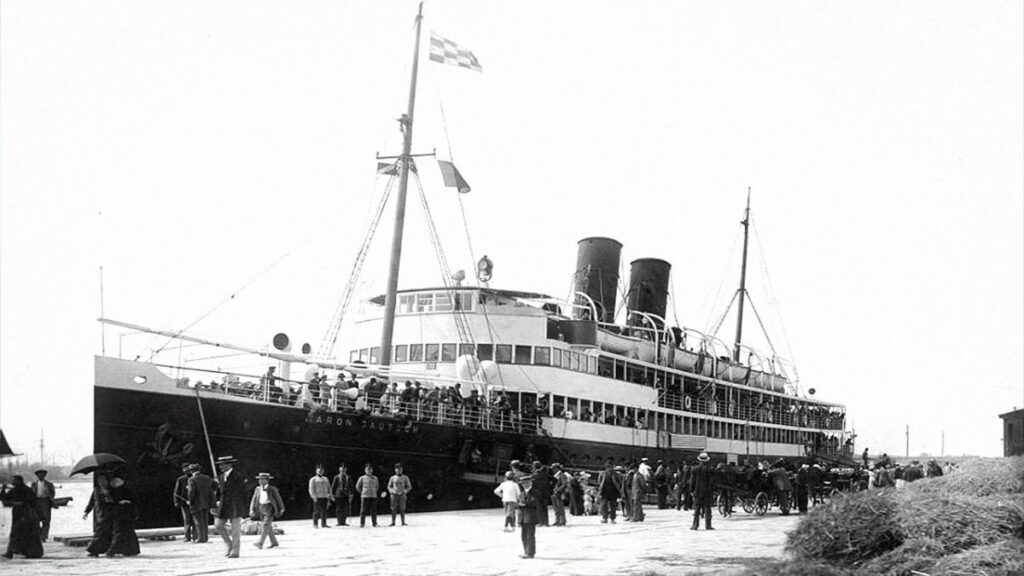
The Baron Gautsch of the Osterreichischer Lloyd Line, of the Austro-Hungarian Empire, was named after the former Austrian Prime Minister and Interior Minister Paul Gautsch von Frankenthurn. Baron Gautsch and her two sister ships, the Prinz Hohenlohe launched in October 1908, and Baron Bruck launched in the summer of 1913, home port was Trieste, they were essentially, albeit small by today’s standards, luxury liners, with both First, second and General (3rd) Class travel options. The Baron Gautsch was built by Gourlay Brothers & Co. Ltd in their Dundee shipyard, Scotland
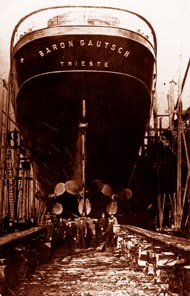
The vessel was beautifully built and appointed, however, it was not without its issues from launch. In 1905 Gourlay Brothers had re-fitted their shipyard in order to keep pace with technology, it had been an expensive outlay, in 1906, Gourlay’s had their best ever year financially, but with a drop off in orders in 1907, a single ship (Ulimaroa) being most of her output, in 1908 the order book looked little better. The Ulimaroa ran aground during trials and had to be dry-docked for inspection, an expensive undertaking, and the Baron Gautsch (Lythe S.G.E “Gourlays of Dundee, the rise and fall of a Scottish shipbuilding firm” P. 17, para 3. Merton Hall 1881) “…. became the subject of such sharp exchanges about delays in delivery and shortcomings in engine performance that Gourlays were involved in the heavy cost of modifying her engines at Trieste, her home port…”. Gourlay’s were late finishing her and delivery was late to the customer, even worse was to come, following her sea-trials the engines‘ output was considered too low, and it fell to Gourlay’s to make modifications to the boilers and improve engine performance at the ship’s home port, Trieste. It is no surprise that the associated expenses for these repairs and modifications were not expected, Gourlay Bros completed them but shortly after that declared bankruptcy
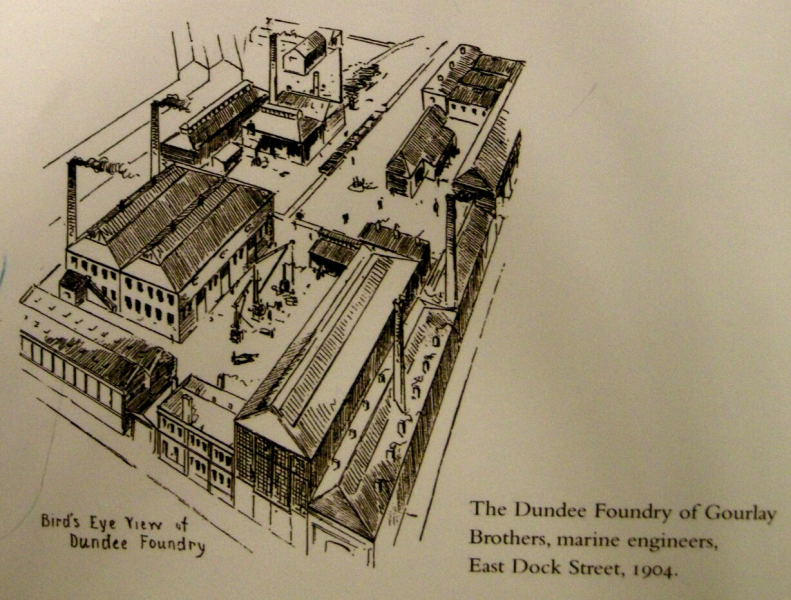
All three of the liners, Baron Gautsch and her sisterships, the Prinz Hohenlohe, and the Baron Bruck, were built for what was at the time known as “The Dalmatian Express Line”, a route that went south of the Austrian Riviera, along the Croatian coast of Istria and Dalmatia. The maiden voyage of the Baron Gautsch was the 16th June 1908 carrying commuters, soldiers moving between Austria and Hungary for duty & service along with their families, businessmen and holiday travelers making the return journey after visiting the popular seaside resorts of the Adriatic
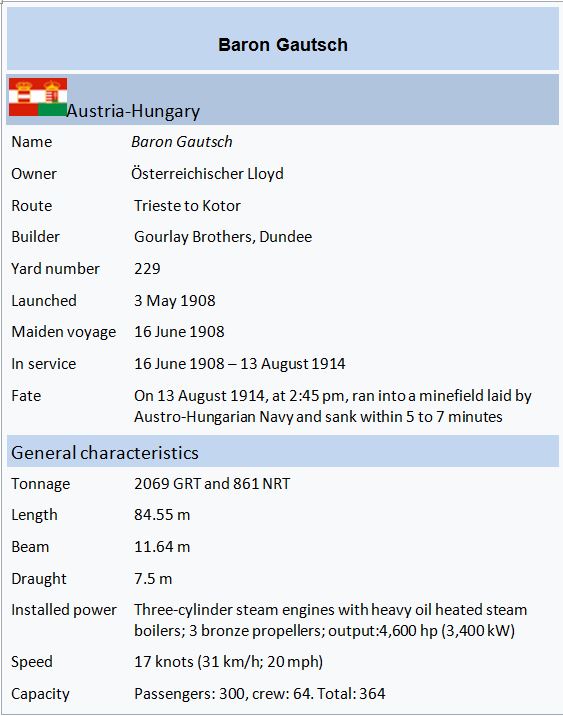
Paul Gautsch, after whom the Baron Gautsch was named, was born in a Vienna suburb, Döbling, in Austria, on the 26th February of 1851 when the Austro Hungarian Empire was at its peak, and controlled most of central Europe. Gautsch, the son of a civil servant, attended the Theresianum boarding school and went on to study law at the University of Vienna, eventually achieving the highest possible honor for the country’s best students, the “Promotio sub auspiciis Praesidentis” he began a career in the Austrian Ministry of Education. On 5th November 1885 Emperor Franz Joseph 1st appointed him Minister of Education in the second cabinet of Minister-President Eduard Taaffe. Clearly an exceptional politician, Gautsch was appointed “Minister-President” (Prime Minister) of Austria Hungary on 30 November 1897, a position he held 3 times before retiring in 1911, Gautsch remained politically active, and a peer of the Austrian House of Lords (The “Herrenhaus”), and was a continual confidant of Emperor Franz Joseph until his death in the spring of 1918
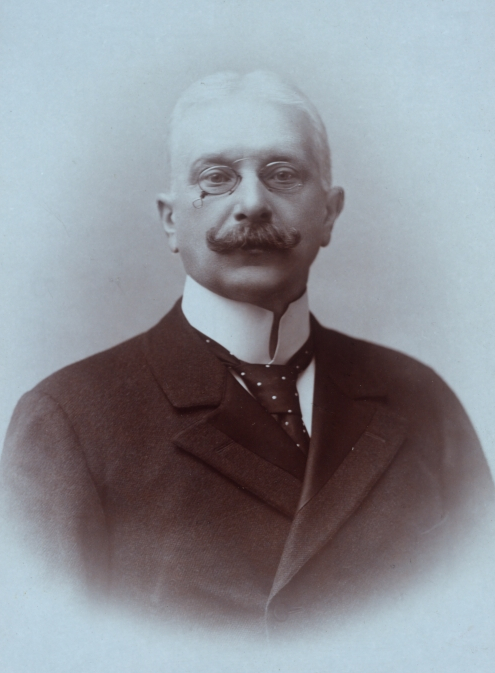
Osterreichischer Lloyd Line was founded in 1833 by Lloyd Karl Ludwig Freiherr von Bruck, a British citizen, it was the first large steamship company on the Adriatic, and based out of Trieste in Italy. In 1836, the company had established a “Department for steamship navigation” in addition to the extant “Department for maritime trade reports”, thereby officially founding the Osterreichischer Lloyd Steamship Company. In 1842, Emperor Franz Ferdinand honoured the company by permitting their vessels to fly the Austrian Flag, and its officers and sailors to adopt Austrian Naval Uniforms. In 1849, the company launched its flagship, “Vorwarts” (Forward), the name becoming the company motto
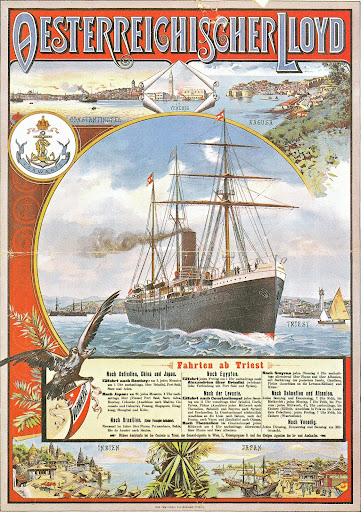
When the Suez Canal opened in 1869 Osterreichischer Lloyd opened up routes to the Far East, Singapore and Hong Kong, pressuring the trade Blue Funnel had enjoyed, almost exclusively before that time, with its improved fast steamers and fuel economy around the Cape. Routes were also opened to Mumbai and Columbo and in 1907 the company moved headquarters to Vienna, Austria’s capital, and at that point opened a line to Shanghai. By 1914 at the outbreak of World War 1 Osterreichischer Lloyd was the premier Austro-Hungarian shipping line, it would survive the war, but not the collapse of the Austro-Hungarian Empire, finally being handed over to the Italians in 1919, the line was re-named Lloyd Triestino until 2006, it survives to this day as Italia Marittima
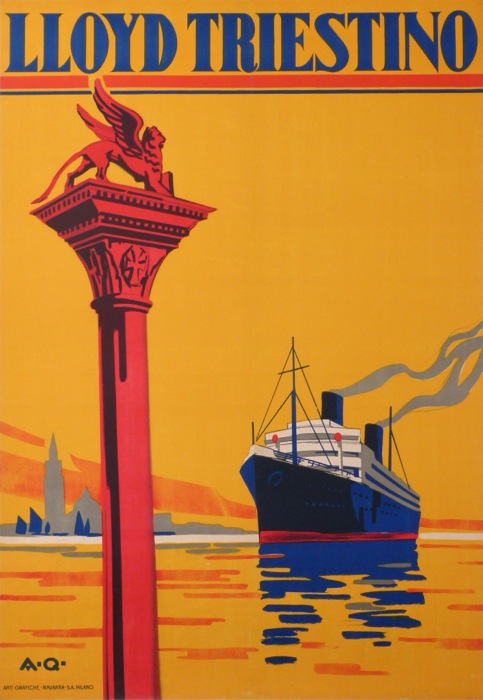
The Baron Gautsch (and her two sister ships), described in the Neue Freie Presse of Vienna (Friday, 14 August 1914. p.10 “Untergang des Floyddampfers ,,Baron Gautsch” ) as “a new, and modern member of the Lloyd Fleet” the report goes on to detail her intended routes, Trieste-Cattaro and Trieste-Corfu, and her “appointments”: 87 first class cabins, 40 second class cabins, describing the vessel as “…..one of the best ships of the Dalmatian Line” with an interior design fulfilling the most modern requirements

The Baron Gautsch had two large dining rooms, one for first class passengers and a second for her other passengers. The walls of the first class dining room had been covered entirely in wood paneling, with each panel featuring pictures. Above the dining room was a music salon, decorated in yellow brocaded silk, a smoking and gents’ room, including a small coffee bar, was adjacent, and finally there were 150 third class passenger accommodations
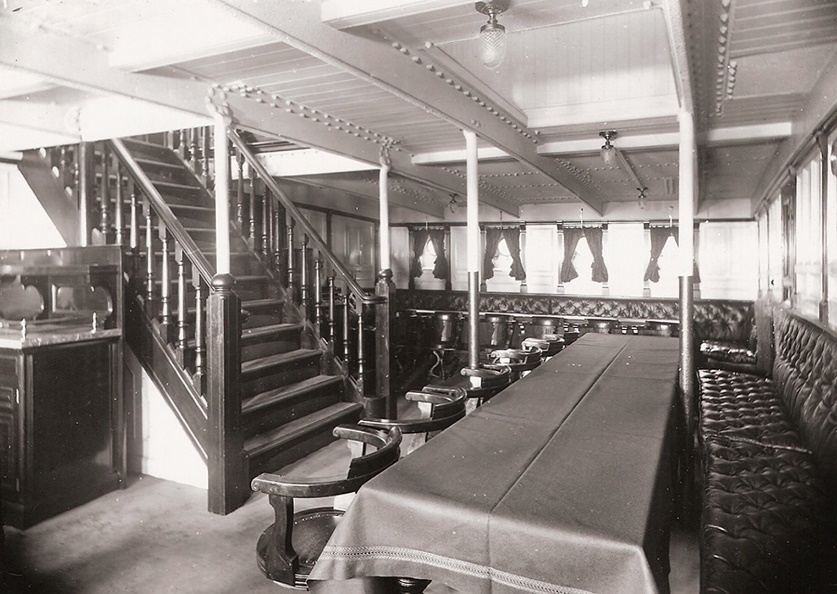

It seems the Baron Gautsch led an unremarkable and idyllic life, steaming up and down the Istrian and Dalmatian coasts between Italy and Croatia, for the first five years of her life, passengers & holiday makers alike rubbed shoulders on her decks and in her lounges, whilst the European superpowers edged closer and closer to conflict in an arms race the world had not seen the like of before

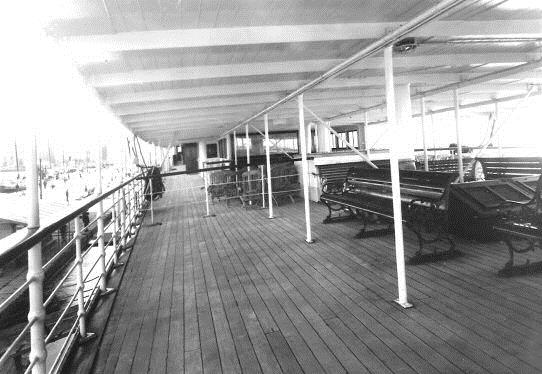
Considering the almost incestuous familial relationships between the Royal families of the time, it is hard to imagine how such a situation arose, this was the Victorian era (from 1837-1901), a time of optimism and bravado, it was the age of the Industrial Revolution, of political reform and social change. The writings of Charles Dickens were driving social conscience, public reform and the eventual abolition of slavery in Britain (1834), the people’s charter of 1838 underpinning civil rights and advancing the emancipation of women, and the discoveries and groundbreaking opus of Charles Darwin, “On the Origin of Species” pushing science into the societal forefront, leading to a railway boom and the first telephone and telegraph. The events marking the reign of England’s Queen Victoria also had a much darker side, with the Crimean War, and the subsequent arms race between the Austro-Hungarian Empire and the British Empire, seeing a scramble to build the world’s largest fleet of Dreadnought Battleships in order to secure dominance of the global seas, and retain the 25% of the world’s population who owed, or gave their allegiance to Victoria, Queen of the largest Empire the world had ever seen
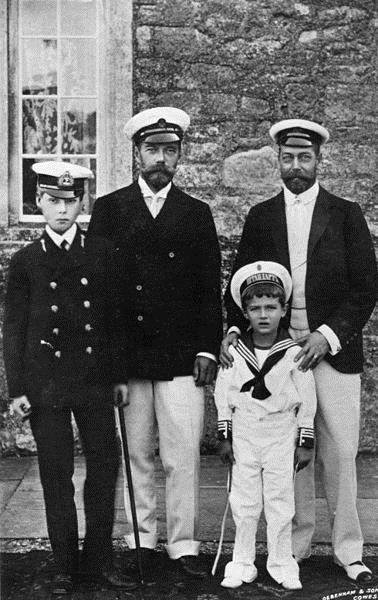
It is not without an impending sense of the Victorian Hubris, the kind that in 1912 led to the sinking of the Titanic, the largest moving object on Earth, that we see Queen Victoria’s wider European relations tearing at each other’s throats, in a display of implicit aggression that led to the eventual destruction of the strict class imposed divisions of Victorian society. It may have been the assassination of Archduke Franz Ferdinand in Sarajevo, Bosnia Herzegovina, that ignited World War 1, but it was Queen Victoria’s family at the heart of Europe and the Austro-Hungarian Empire, that fanned the flames. Victoria had married her first cousin, Albert of Saxe Coburg, they shared grandparents, Victoria’s mother, Victoria of Saxe-Coburg-Saalfeld, and Prince Albert’s father, Duke Ernst of Saxe-Coburg & Gotha, Ernst and Victoria were brother and sister. Franz Ferdinand was Victoria’s Granddaughter, Marie’s, husband. Of Victoria & Albert’s nine children, all were married off to important European royal families, their daughter Victoria married Frederick the third of Prussia (their son was Kaiser Wilhelm II), their daughter Alice’s child, Alexandra, married Tsar Nicholas II of Russia, and her final daughter, Beatrice, married a German Prince, and those were just the female children
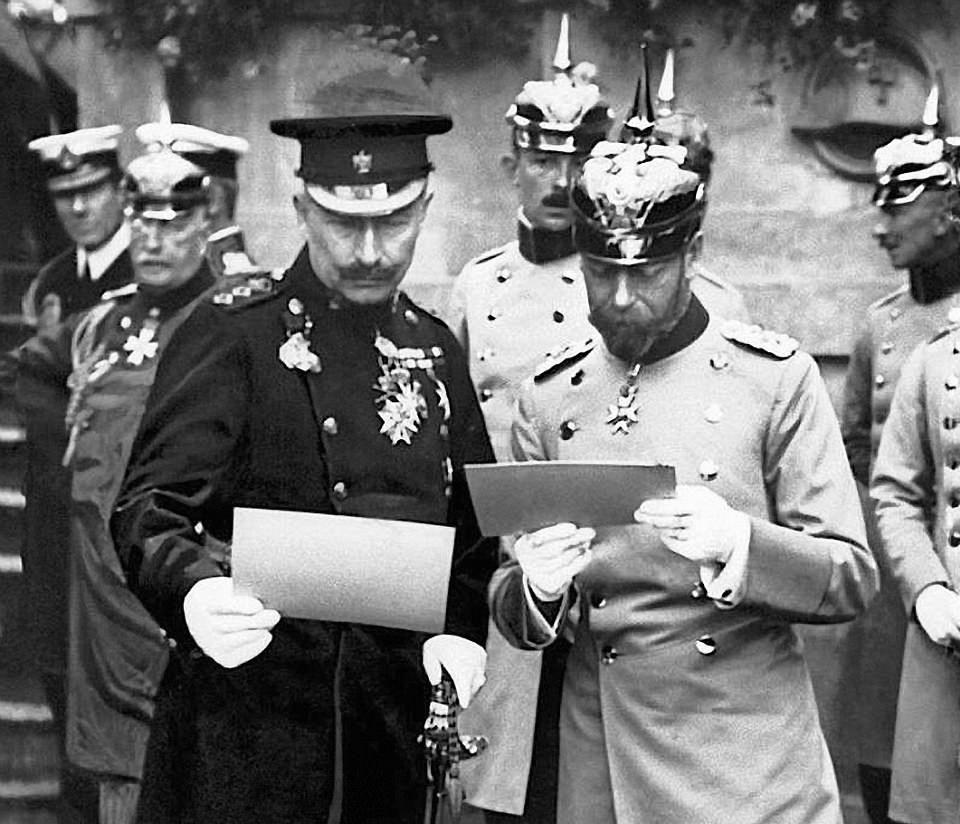
It was the outbreak of World War I that doomed the Baron Gautsch, and, in so doing, manifest tragedy from several perspectives, Royal families unable to resolve bitter power struggles, emergent social change and technological advances outpacing a public, hungry for opportunity but with little sense of potential consequence, and basic greed, a struggle for domination in any other form. There is, once again, that portent, Hubris, at the centre of all of this, had Kaiser Wilhelm II not envied Queen Victoria’s Navy and Empire quite so much, had the scapegoats of Bosnia Herzegovina and the Austro-Hungarian Empire treated Serbian Nationalists in a somewhat more politically adept manner, perhaps two world wars could have been avoided, after all, it was the implications of WWI that settled the fate of Serbia and the Balkans, and contributed to the fuel of Europe’s second world war, and an even wider impact on global stability…..
But there was a more profound and immediate Hubris in the Baron Gautsch sinking, and the loss of some 131 souls in the Adriatic Sea…..The Baron Gautsch was unwittingly sunk by her own navy
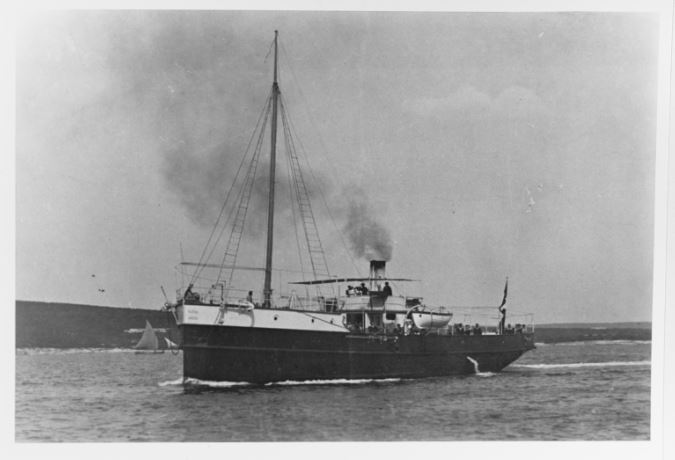
13th August 1914, at 14:45, The Baron Gautsch, bound for Trieste and steaming at her full speed of 17 Knotts, was sunk by a mine, laid just hours before by the Austro-Hungarian minelayer Basilisk. The Basilisk had seen the Baron Gautsch and was desperately signaling her to prevent her steaming into the minefield they had just laid, to no avail, the signals went unseen, or unheeded, the sickening inevitability of her fate sealed, it was the Basilisk who sent out the first motor launch to save whatever passengers they could, following the detonation of one of their own mines on Baron Gautsch’s Port side. It took just 5 minutes for the Baron Gautsch to list to Port and then slip under the Adriatic. The Basilisk, joined quickly by the Austro-Hungarian destroyers “Balaton”, “Triglav”, “Orijen” and “Uskope” saved passengers swimming in the fuel oil and resultant fire following the sinking, it is ironic that an unknown amount of those left in the water, (without life jackets or a place in the few lifeboats that did launch successfully from the Baron Gautsch), undoubtedly owe their lives to the ship that unwittingly placed them in such danger to begin with
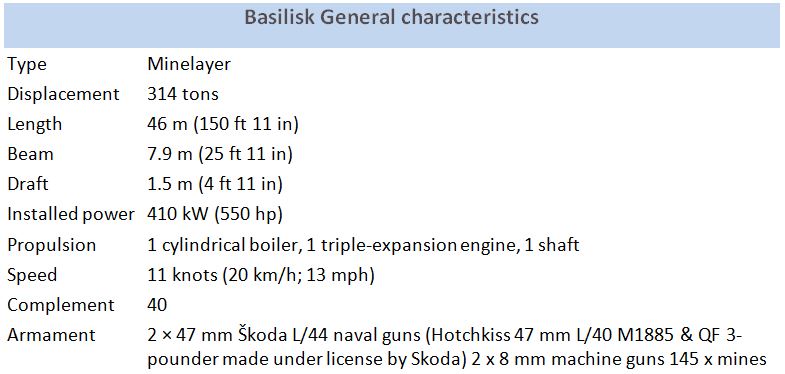
The Basilisk was built in the shipyard at Lussimpiccolo, which today is the town of Mali Losinj on the island of Losinj in the Northern Adriatic, it is now a part of Croatia but at that time it was part of Austria. Ironically the Baron Gautsch had boarded passengers in that very port on the morning of her sinking. The Basilisk went through the first world war then to be “ceded” (given as war re-payment/spoils) to France in 1919, being commissioned into the French Navy in 1920 as the Aurore, she was transferred to the Romanian Navy in 1922 and re-fitted at Galati shipyard from 1937-1939 when she took part in the second world war
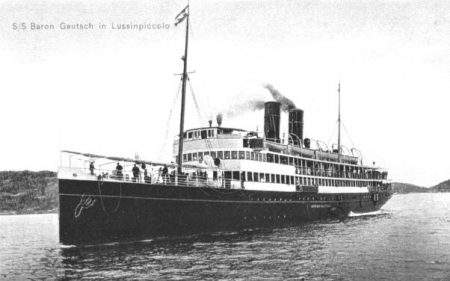
The Basilisk ended her life in 1941 as the Aurora, sunk by Soviet aircraft, but not before she had taken part in the Soviet occupation of Bessarabia and Bukovina in Romania and then in Operation München, the joint German/Romanian response to the Soviet attack on Romania, her service record notes she contributed to the sinking of a lead destroyer during that period: (On line resource: https://www.wikiwand.com/en/NMS_Aurora Accessed 20/09/2021) “Aurora laid her first mine barrage in the morning of 30 June, off Sulina, during the Soviet invasion of Bessarabia . She was commanded by Lieutenant-Commander Stan Baicu. A second barrage was laid during the night of 10–11 January 1941. She laid a third barrage in the area on 27–28 June 1941. Between 16 and 19 June 1941, she and two other Romanian minelayers, Amiral Murgescu and Regele Carol I (converted merchant ship), laid a barrage of 1,000 mines between Cape Midia and Tuzla, to protect the main Romanian port of Constanța. The mines laid off Constanța would later sink a Soviet destroyer leader during the 26 June Soviet raid on the port. Aurora herself was sunk on 15 July at Sulina during Operation München by Soviet aircraft”
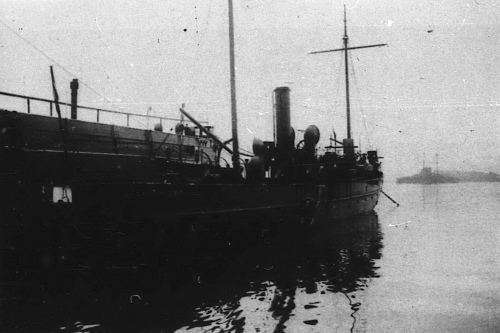
News of the Baron Gautsch sinking reached the world from many sources despite the outbreak of the war, the New York Times of 15 August 1914 carried a brief notice (P3) under the Headline: “150 Die on Austrian Liner” going on to describe the tragedy in short, concise fashion, perhaps due to the sensitivities surrounding the war and the multi-national citizenship of the USA through European immigration, “Killed or drowned when Vessel Hits Mine in the Adriatic. London, Aug 14 – About 150 of the passengers and crew of the Austrian Lloyd Steamer Baron Gautsch were killed or drowned when the vessel was blown up today by a mine off the Island of Lussin, on the Dalmatian coast, according to a Reuter dispatch from Triest. She carried about 300 passengers and crew, of whom about 150 were rescued”
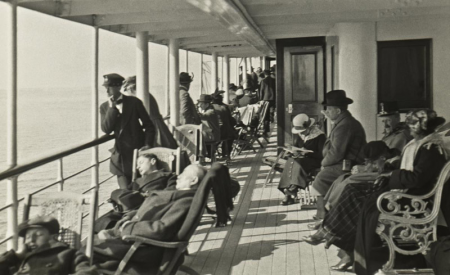
The report carried no apportioning of blame and, in the circumstances, that was probably best, as the story unfolds the nature of the sinking became more of an issue, after all, the Baron Gautsch was a civilian vessel, carrying passengers of many nations, and had unwittingly become the first maritime casualty of World War I, and, as it would become clear over the next few days, she was not only a victim of her own Navy, but the first casualty of a new kind of sea mine………
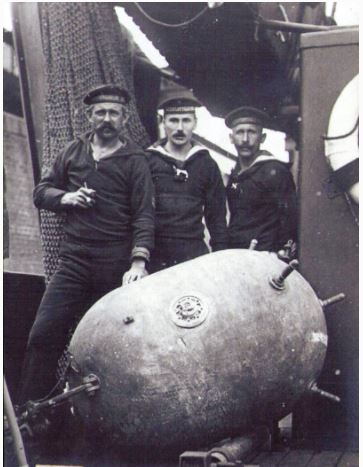
The new type of mine was known as “Hertz Horn” and had distinct “horns” now archetypal of almost all war movies with naval scenes. Described by The Great War Blog (On-Line Resource: https://ww1blog.osborneink.com/?p=2385 Accessed 17/09/2021) the Hertz Horn Mines were “Made of soft metals such as lead, the ‘Hertz horn’ contains a conductive acid ampule that breaks when the tube bends, thus activating a battery charge to detonate the mine….”
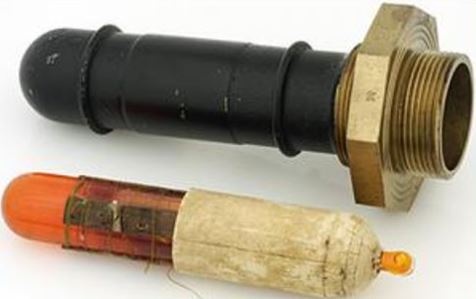
The Great War Blog description continues: “…….Although naval mines have been used for decades, the Hertz horn design is the first manufactured mine that explodes reliably after striking the hull of a vessel, shattering steel with an enormous pressure wave. Always controversial, but especially when they destroy civilian ships, naval mines were very nearly banned by the Hague Peace Conference of 1907. Although the Asquith government officially condemns the Kaiser’s navy for resorting to such indiscriminate weapons, Britain will later copy captured German mines to build their own first reliable contact mines, then lay some 235,000 of them in the allied blockade of Germany”
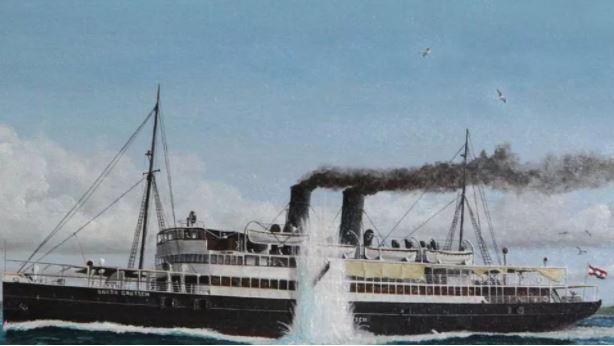
So where does “Hubris” damn the Baron Gautsch to the depths of the Adriatic, considering this was essentially a non-combatant passenger ship which should, to all intent and purposes, have been a relatively safe haven for passengers throughout the war? Let’s begin with the intended, and the actual use of the Baron Gautsch…… at the start of hostilities, the outbreak of WWI, 28th July 1914 (to 11th November 1918) Austria requisitioned all her Merchant Fleets including those of Osterreichischer Lloyd. The ships were placed under the control of the Austro-Hungarian Navy for a time and carried out troop movements for her armies. The Baron Gautsch was no exception and moved troops and their equipment around the Adriatic from ports such as Trieste to Kotor, in all making four journeys before her fateful return journey from Kotor, bound for Trieste, with Bosnia-Herzegovina refugees and passengers on the 13th August 1914. It is clear from her carriage of military personnel, that the Baron Gautsch would have presented a legitimate target, should it have been an allied or British ship that sunk her

The tragedy of the Baron Gautsch might easily have been an allied attack, but it wasn’t, the lives lost in her sinking might have been simply avoided….. but they weren’t. Austrian Navy files on the sinking were still open until 1927 all but a few of those were left following a fire in the Vienna “Justizpalast”, some believed to be lost during the burning of the German Reichstag (Parliament Building) 27th February 1933, just four weeks after a certain Adolf Hitler had been elected as Reichschancellor. The sorry tale of the sinking of the Baron Gautsch might not have such a bitter twist, but for a series of damning circumstances described in heartrending sequence (translated by a Mr Felix G. Game), extracted from several of the Austrian Navy’s remaining documents following their judicial investigation into the tragedy……
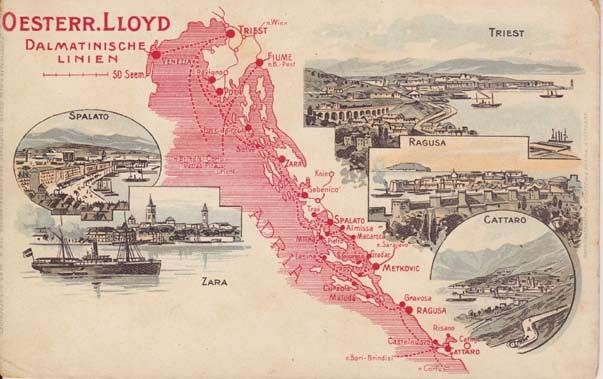
From the remaining reports available, and from the genealogical family history of Oberleutnant Robert Franz Schenk of the Bosnian-Herzegovinian Army, Felix Game, whilst researching his ancestor in “The Game Ancestry – Second Edition – Part 1 – Chapter 5”
(On-line resource: Accessed 22/09/2021. http://freepages.rootsweb.com/~fggame/genealogy/htmldocs/zwierzina-johann-1792-schenk.html )has translated the notation on the Baron Gautsch and the pre-briefings given to the ship prior to departure:
“An advisory meeting was held in the port of Cattaro before the steamer sailed. It was attended by the First Captain and the Second Captain (common designation at Lloyd’s, where the latter carries out the duties of a First Officer) who were informed of the approximate extent of the minefield currently being laid. They were also warned to maintain a sharp lookout and to heed warnings that they may receive from Austrian Navy vessels. The subsequent voyage was uneventful as far as Lussin. In that port the vessel was under the command of the Second Captain, who would be relieved by the Second Officer from Rovigno on (the First Captain was at this point on his scheduled rest period). In Lussin the word was that no problems would be encountered if a distance of 10 nautical miles were maintained from the coast…..”
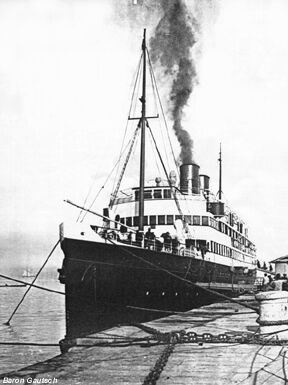
Felix Game’s tenacity in researching the death of his ancestor unearthed a piece of history which had been lost to his family for generations, a report in the “Wiener Zeitung” (Vienna Newspaper) of 3 Mar 1916 reported of Oberleutnant Robert Franz Schenk: “The Emperor awarded 1½ years after his death the Order of the Iron Crown 3rd Class to First Lieutenant Robert Schenk of the Bosnian-Herzegovinian Infantry Regiment #4 who lost his life on 13 August 1914 during the sinking of the Lloyd Steamer Baron Gautsch while engaged in the saving of numerous humans lives in a heroic, and extremely selfless manner,” It paints a picture of the tragedy of the event, and the heroism of at least one of the passengers lost to the Baron Gautsch sinking, Oberleutnant Schenk had only married 4 days before his trip and the desperate sadness of his heroism conceals an even deeper tragedy, there is no mention of his young wife’s name to be found and both slipped from this earth into the depths of the Adriatic on that day
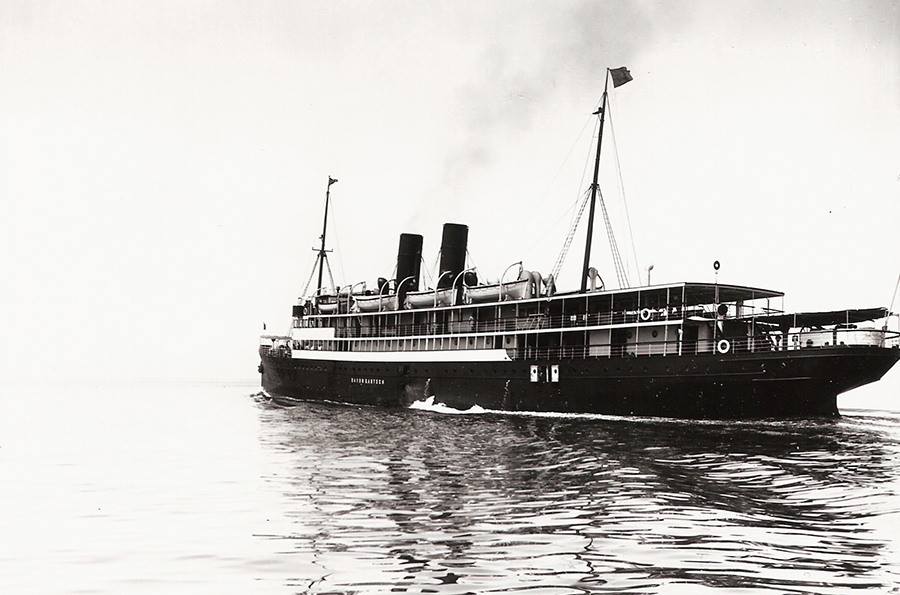
I first heard of “…a shipwreck I dived some time ago off Pula, deep and eerie, I have to say it spooked the hell out of me and you could see it all, it was like a ghost you could see through, almost not there” from one of the mob (sadly I cannot remember exactly who) with me on my UN excursion into the Balkans in 1992 (elsewhere in this blog under “other stuff”). Now, as I was charged with setting up a diving course, and some recreational diving, for the various UN army units involved in the cooling of the situation the death of Tito had caused, and the collapse of the Yalta conference imposition of “Yugoslavia” onto the world map, I was very keen to investigate…..

The story of setting up the UN recreational diving programme for the UNPROFOR tour is documented in the earlier piece in this blog, but, during the setting up of the diving, I got nothing out of Vlado, Slavko, Egor or Jellico on any local wrecks at the time. I’d have loved to dive something spectacular however there were restrictions in place and they were being taken seriously, after all, Pula was not only an important port for Croatia, but there were shipyards close so the Pula port authority was reluctant to let anyone dive locally, let alone be given permission to navigate around the coastal areas nearby. It would be years after I finished the UN tour before I thought of returning specifically to dive, and it was more by accident that I learned of the Baron Gautsch (when looking for a dive centre to fill a couple of days of a longer stay, once Ellie had decided Croatia was worth more than a brief weekend visit), than it was a deliberate search for her. I had been back to the Hotel Histria as a sort of catharsis, not from any trauma, the tour was largely uneventful, more from a “missed opportunity” perspective
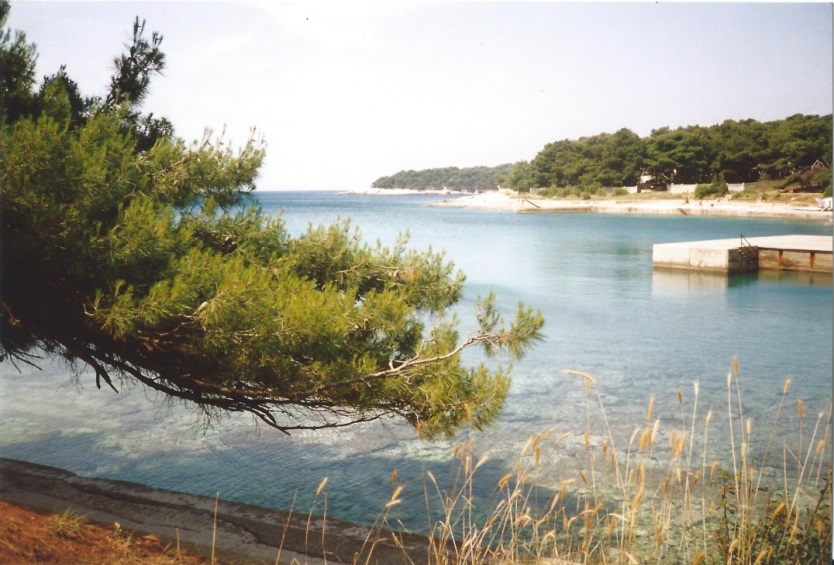
I had wanted to start a serious dive operation in Pula, based on the Verudella peninsula, following my return to the UK, I knew Croatia would return to being a holiday destination soon enough after the conflict, and I believed I could set-up there and take advantage of a relatively un-dived (from a UK perspective at least) Blue Water location, just 2 hours flight from any UK airport, and with little difficulty, given the co-operation of the Croatian authorities and a desire to bring in foreign income to an economy that tanked during the crisis. Sadly, the idea was quickly squashed, our youngest boy, Kai was born and Ellie’s desire to up-sticks and move to a country only marginally out of a serious conflict was, to say the least, none-existent. There was also the matter of set-up costs, after all, I had nothing but dive kit to show and which bank was going to invest in that situation, perhaps it was, after all, just a pipe dream, but I wanted to see what the chances were, or could have been, so I persuaded Ellie to go over for a week just to see what had come of Pula and Murgon’s dive operation
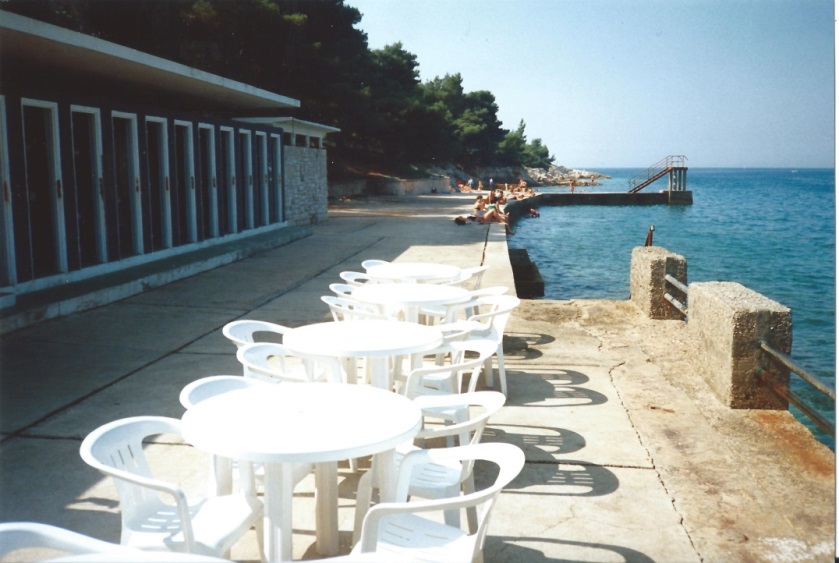
The human tragedy of the shipwrecks I am privileged to dive is never far from my mind, not only whilst I am diving the wreck itself, but also as a background to the sinking and the ship, her crew and passengers and the loss their families and friends endure. In researching the Baron Gautsch I had not, until recently, come across actual descriptions of the sinking and the surrounding chaos of the event, perhaps as this is not a wreck widely known in the UK and not a region previously dived very much from the UK, although diving here is definitely on the increase as several expeditions from the US have proven
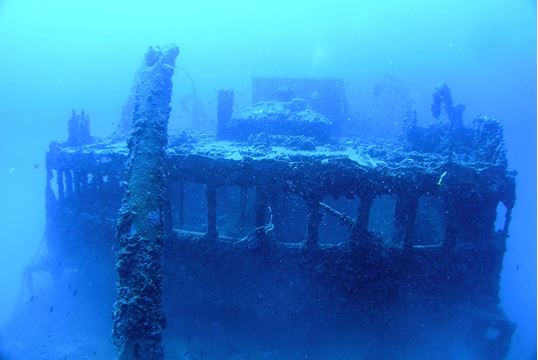
Indeed, it is a US source that brought home the human tragedy that befell those aboard, Judi Heit in her blog (On-line resource: https://civiliansandwarsatsea.blogspot.com Accessed 23/09/21) researching civilian casualty’s lost through war at sea quotes “Dr. Neubauer” a passenger sailing on the Baron Gautsch with his family, again from the “Wiener Zeitung” 18 August 1914 issue (p.9, c.2): “There was big panic on board. He credits a chief railway inspector from Brno for keeping his wits about himself, breaking open the cabin door in which the life preservers were stored, and thus providing his fellow passengers the only means of saving themselves. Dr. Neubauer’s party also managed to obtain life preservers and they jumped into the water. His daughter Bertha with the baby in her arms did find a place in one of the life boats, but after a few men jumped into it, the life boat capsized dumping in the water those already seated. The waves tore the child from the mother’s arms and it was never found. Continuing to swim, Neubauer found his other daughter Luise (who was a teacher at her father’s school), but never again did he see his wife, nor his daughter Berta’s maid”
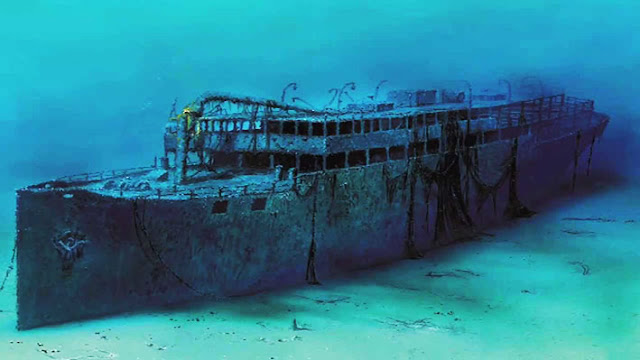
Following the sinking the Captain, Paul Winter and Second Captain (First Officer) Luppis, who both survived the incident, were interned in Pula to answer for the situation and circumstances that led to Baron Gautsch’s demise. On the deck, in command at the time of her sinking, Second Officer Tense, had no briefing in regards to the minefield, Felix Game’s translation is damning: “Approximately abreast of Pola the commanding Second Captain had the Second Officer called, and told him that he was not feeling well, and asked him to relieve him 45 minutes earlier than scheduled. The Second Officer readily agreed to this without having any knowledge of the danger of the mines. He had been supervising the embarkation of passengers and the loading of goods in Cattaro and was for this reason not present at the pre-departure meeting. And strangely enough, none of the other people who knew thought of informing him about the dangers, allowing the Second Officer to sail blindly into the recently laid minefield” (On-line resource: Accessed 22/09/2021. http://freepages.rootsweb.com/~fggame/genealogy/htmldocs/zwierzina-johann-1792-schenk.html )

Second Officer Tense, who neither the Captain nor First Officer had briefed on the activities of the Austrian Minelayers, survived the sinking. In horrifying irony, Second Officer Tense would later be found on the shores at Pula with a bullet hole in his head, assumed at the time to be suicide. Whilst both the Captain and First Officer were reprimanded, detailed records were lost in the chaos of the war, and the various administrative fires of the time, but both seem to have escaped any serious consequences, remaining with Lloyd’s Austria and commanding several vessels in the following years. There was, of course, in the circumstances, opportunity to deflect blame, at least initially: “Immediately after the catastrophe, there were of course suspicions of a bomb having been placed aboard – after all there was a Serb woman working in the kitchen”, a telling statement clearly showing the animosity of the time between Austro-Hungary, Serbia and Bosnia-Herzegovina, following the assassination of Archduke Franz Ferdinand (the heir to the throne of Austria), and the resultant outbreak of the war in Europe. These suspicions proved unfounded when the investigations proved Basilisk had not only mined the area hours before, (indeed having finished that exercise, literally, only to see Baron Gautsch steam headlong towards their deadly and destructive network of new mines), but that Baron Gautsch was paying no attention to their attempts to warn her off
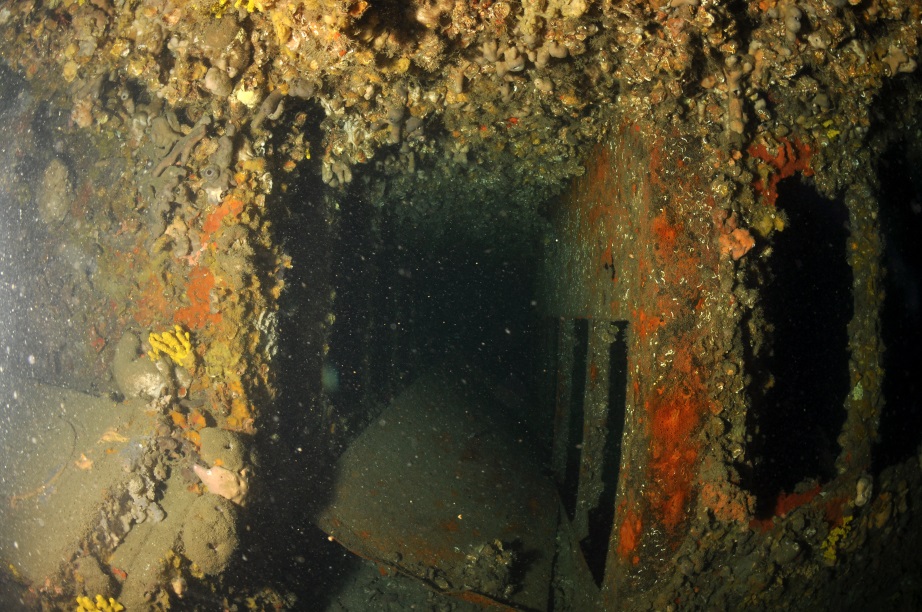
I dived Baron Gautsch in 2015 with Indie Divers of Pula and from the start of the descent down the shot there was the anticipation of an epic dive, my Navy Log book describes the dive: “05/10/15 BARON VON GAUTSCH Pula Croatia So after 23 years I manage to get back to dive Pula my first ever foreign dive site! This time the Baron Von Gautsch an Austro Hungarian passenger liner sunk by mine an hour and a half out of Pula with great loss of life in 13 August 1914. We dropped onto the bow @ 35m and then toured through the bridge & into the main of the ship. The Baron is very open – stood flat on the sea bed and upright but with some wood still evident on her promenade deck. The viz was good and this is a go-pro dive so all recorded. We went through her deck levels to her engine room where you can see her steam engines & back up to go to the stern then we swam the Port bridge deck to exit at the bow & deco for half an hour – great return to Croatia – loved the dive! Air In 230 Out 100 Viz 10-12m Buddy David an Italian Photographer”
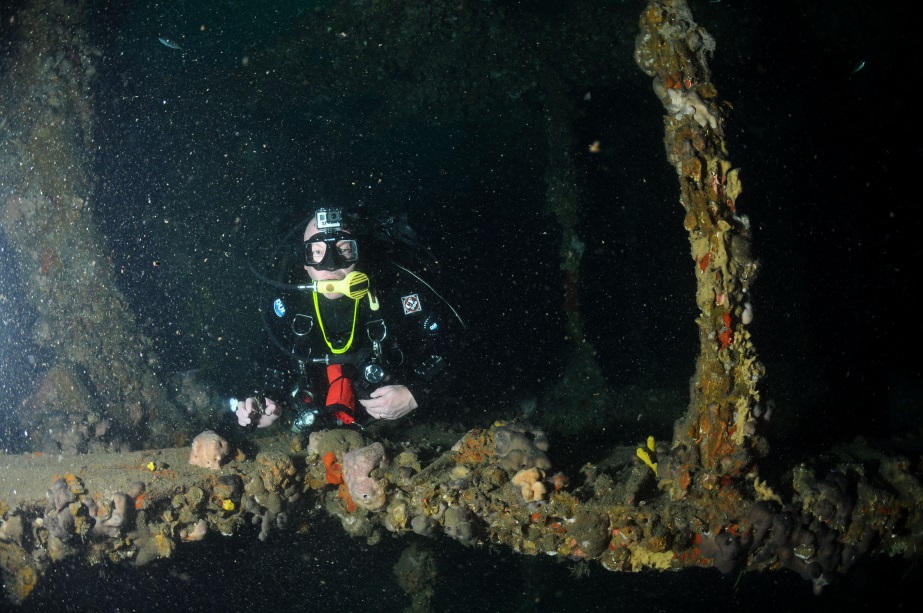
As is always the case, the dive log does little to describe the feeling of diving the Baron Gautsch, there is of course a descriptive of the wreck, a rough outline of the areas visited, but nothing to evoke the feel of her! The first impression of the bow looming out of a green and gloomy Adriatic on that October morning was quite something, the wreck almost shrouded in the haze of what was a darker and lesser viz than usual in the Adriatic. Knowing there had been many innocent casualties, a high proportion of those casualties children, made the dive bitter-sweet, those with children will perhaps better understand the deep despair of lost young lives. The wreck is in beautiful condition, wholly intact and sat, in epic movie style, as if she could sail away at any moment, but skeletal, thin of any fittings, windows, portholes, doors, anything…..it is clear that any fittings have been taken over the years, some feature in museums, where they really should be, I’m sure some are held privately too
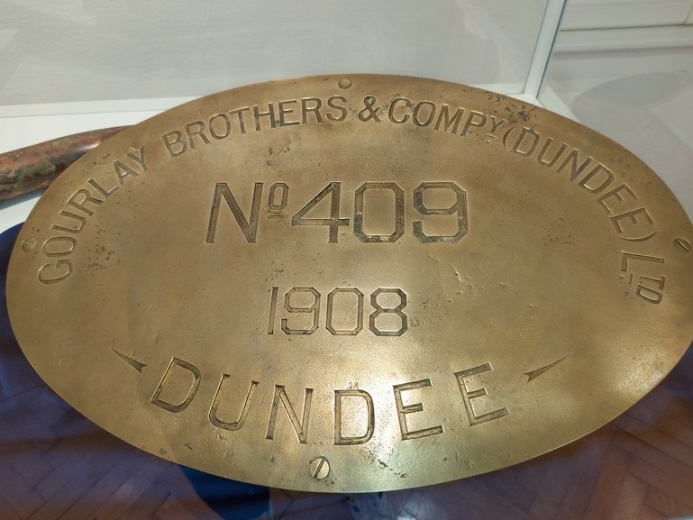
The run through her was bathed in eerie green light like that at Stoney Cove during the summer months. The corridors show where teak planking would have lain, jagged support frame ironwork evident and awaiting anyone not in tight control of their finning or arm movements, occasional remnants of Teak linger as a reminder of the Baron’s once pristine and luxurious fittings and fixtures. The middle deck towards the centre of Baron Gautsch shows what would have been her stairwell and, in the film of the dive, if you watch, you will see one of her funnels, collapsed into the space resting at a sharp angle down the stairwell, but still allowing plenty of room for us to descend and look at the engine room itself
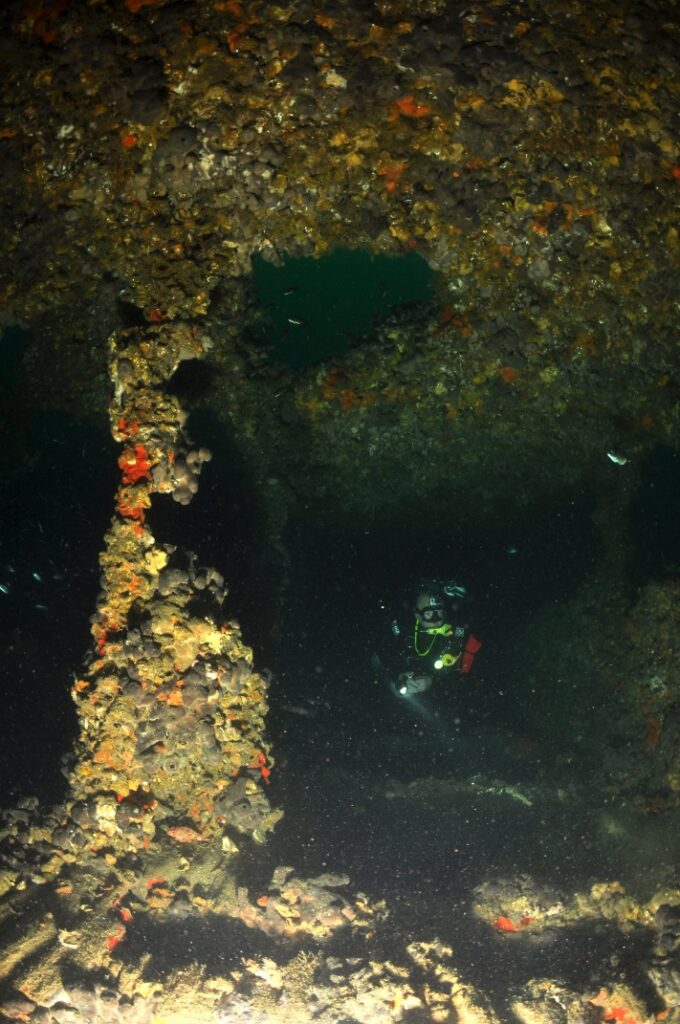
I loved diving the Baron Gautsch, the easy access throughout is rare in a wreck, her size making her a wreck you can see a lot of on a single dive, if you don’t mind a little deco, and her depth meaning nitrox is a great option allowing longer dive times. Really though, the Baron is an amazing survivor of a catastrophic, almost tectonic clash between superpowers, the Austro-Hungarian Empire and her allies, and the British Empire and, eventually, her allies. The very first maritime casualty of World War I sits defiantly, when almost all evidence of that tumultuous conflict has vanished from the surface of the Earth, in her saline crypt, a monument to technology, to hubris and to the futility of all wars. I describe diving shipwrecks as a privilege, diving such a monumental wreck as the Baron Gautsch is a rare privilege indeed, the mere fact she exists is insufficient to fully capture the feeling of gliding through corridors once trod by the elite of Austro-Hungarian society, the truth of her testimony transcends that, the Baron Gautsch sits as proof mankind is doomed, if for no other reason than the stark reality….there is still war on Earth……..and she begs the question….will there ever not be war somewhere on Earth?
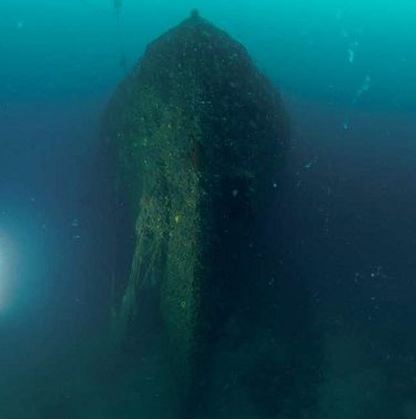
The Baron Gautsch mirrored the 1912 loss of the Titanic, both steaming headlong towards catastrophe in a kind of blissful ignorance of the imminent danger they were in, a mirror image of Europe in the lead-up to World War I, it is perhaps no surprise to find the Baron Gautsch is commonly known as the Titanic of the Adriatic!
My Thanks go to Davide Bonnici, the “Italian Photographer” on our dive, for the excellent photos shown in this piece
Dive The Baron Gautsch With Me…….
